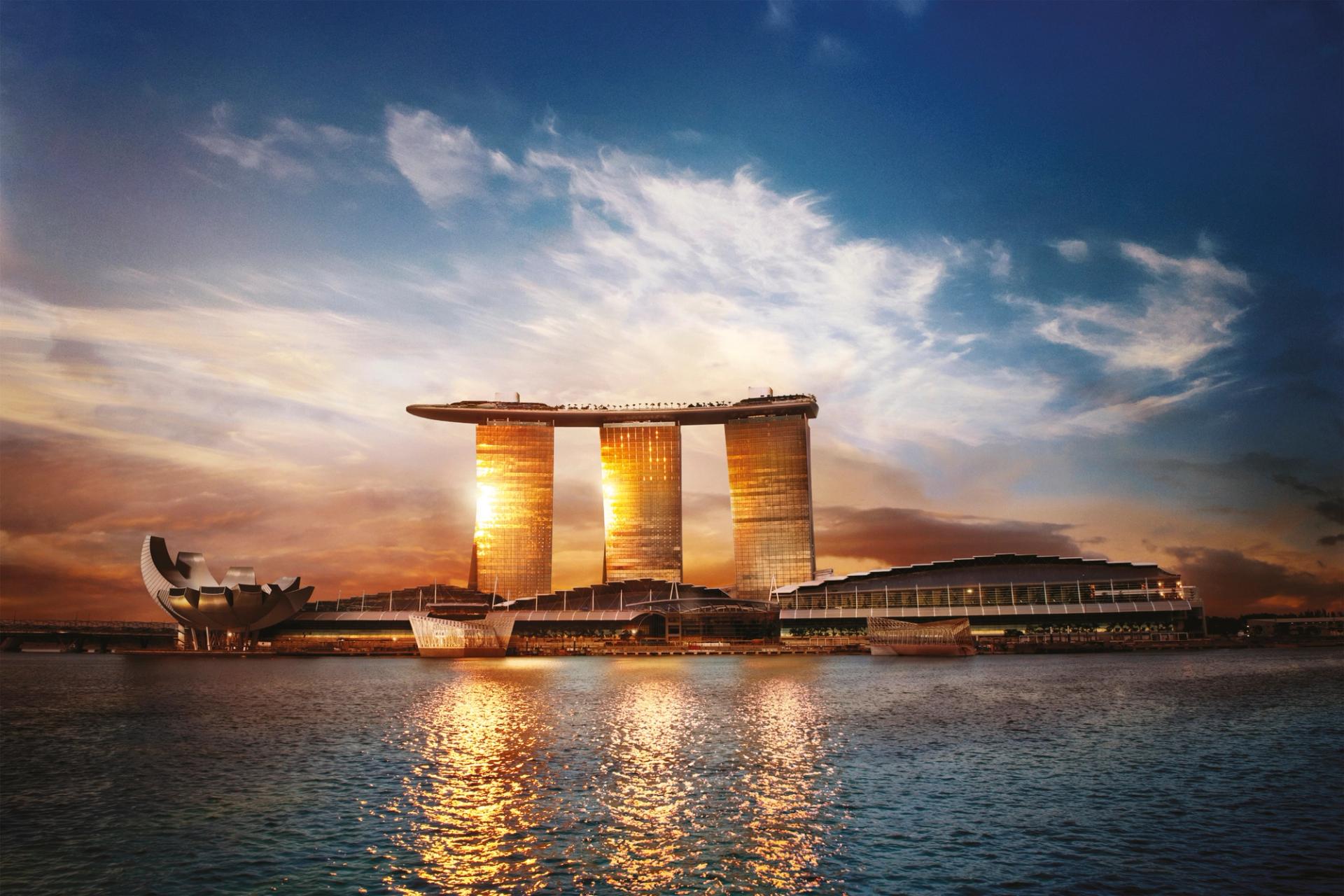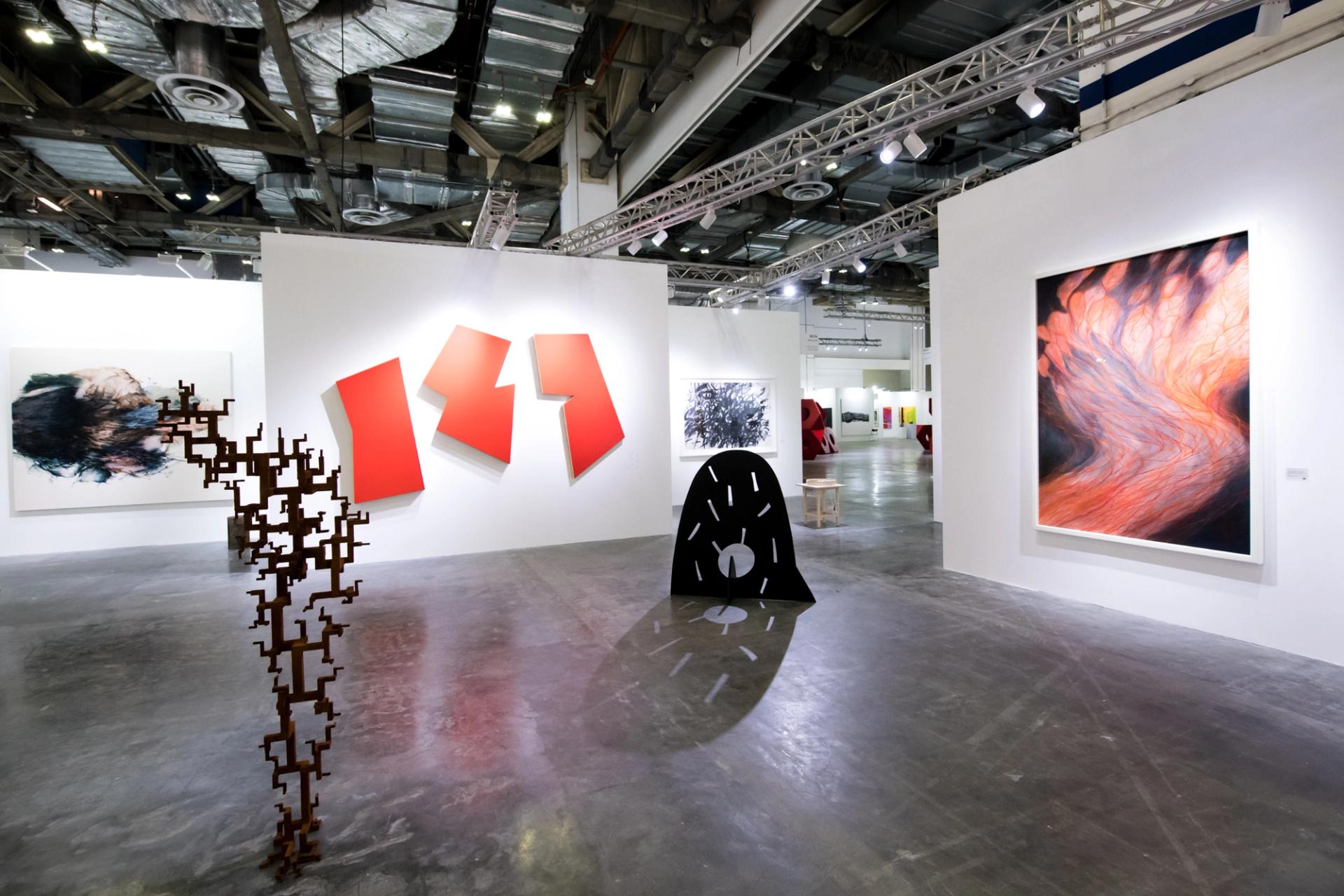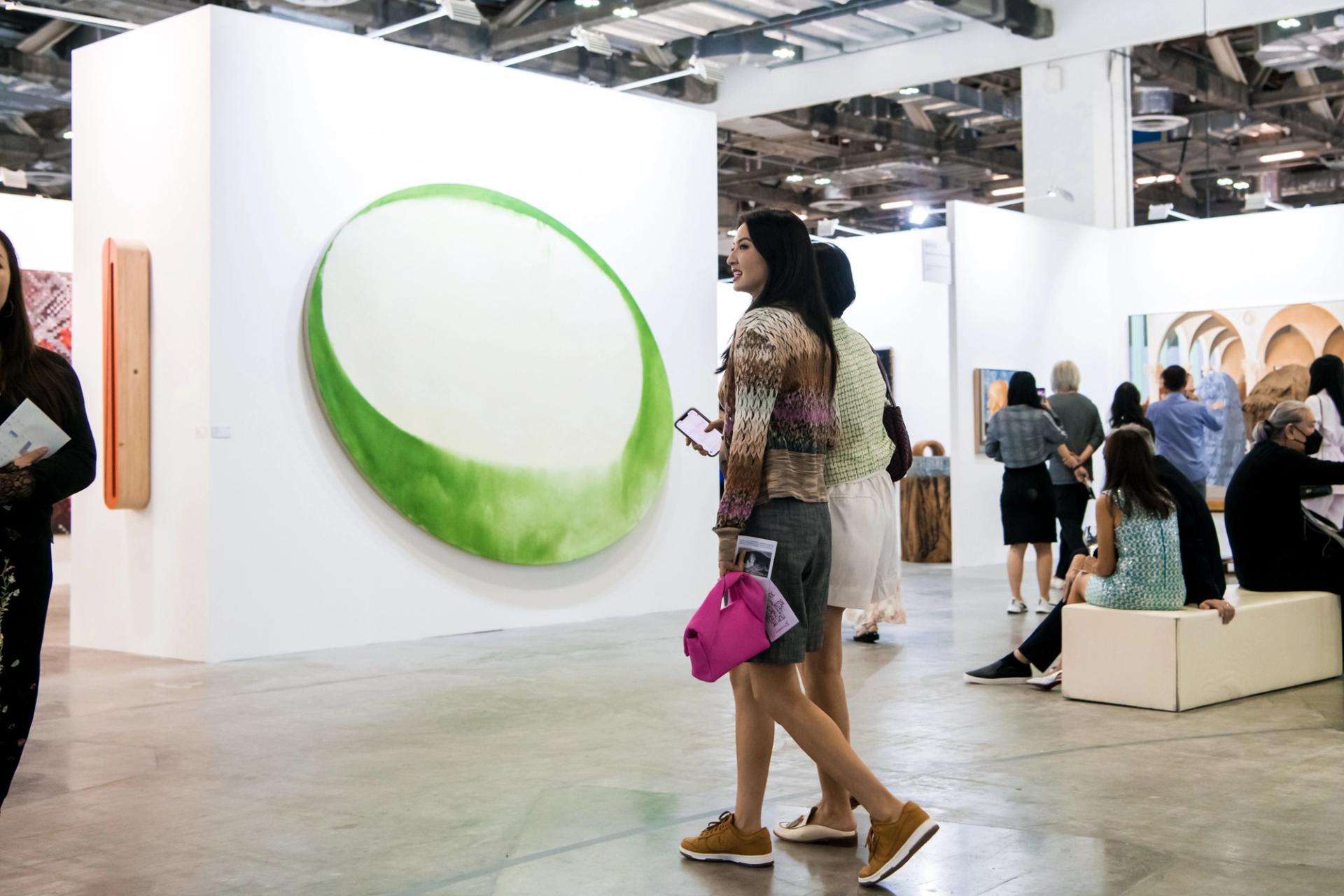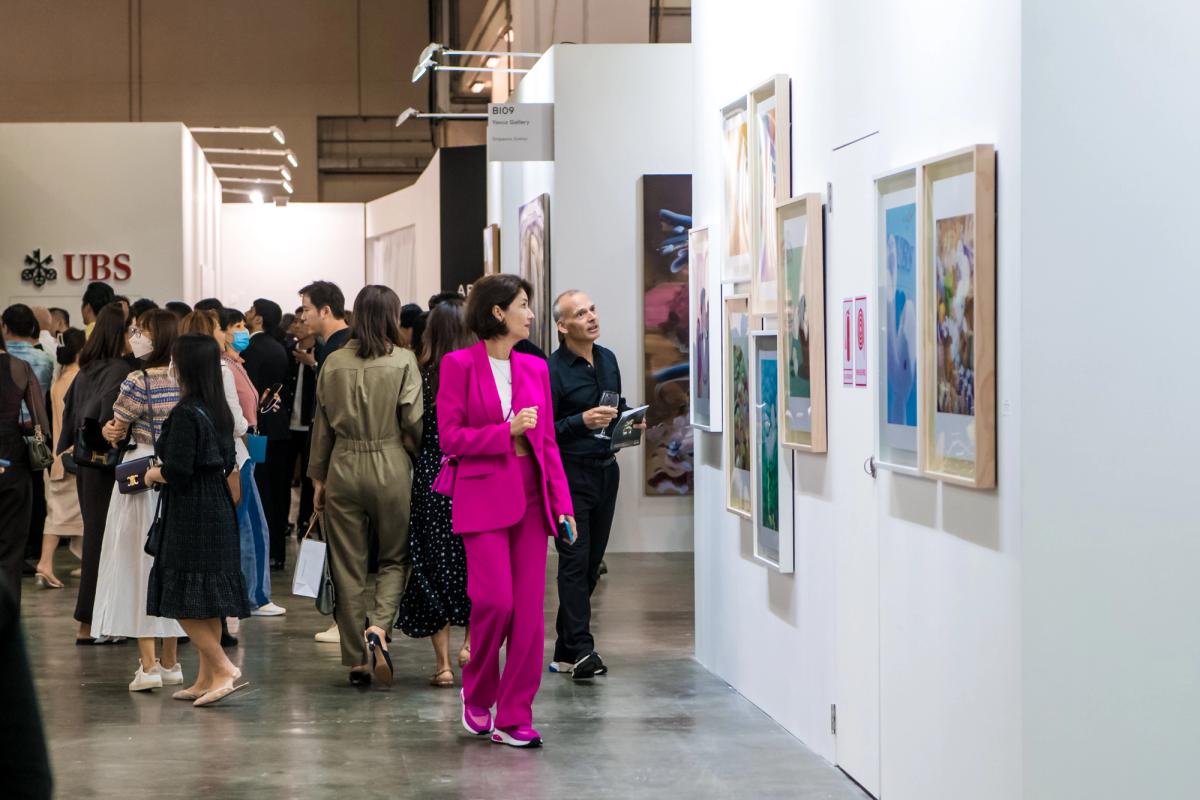“It’s hot, humid and small,” was one collector’s summary of Singapore when asked if the city-state could become the new Hong Kong, which is to say the new dominant art market hub in Asia. It is certainly still hot and humid, but now also buzzing with art-excitement as the much-postponed Art SG opens to the public today (until 15 January) in the convention centre of the behemoth Marina Sands Bay Hotel.
Singapore once had an art fair, Art Stage Singapore, which came to an undignified end in 2019 when the organisers pulled the plug at the last minute. This year, the fairs co-founders Magnus Renfrew, Tim Etchells and Sandy Angus have put on a far bigger, far more impressive event, one which has attracted the cream of art dealers from across the world: 164 galleries from 35 countries.

Art SG takes place in the Marina Sands Bay Hotel
Courtesy of Art SG
Spread out over two floors, the fair concentrates the heavyweights, such as Pace and Zwirner, on the lower floor, and puts younger galleries on a second floor. “This is Singapore’s moment,” Renfrew says as the fair gets under way. And he is not wrong. Singapore sits among some of the healthiest economies in the region, with GDP growth of +5% in Indonesia, around +4% in Thailand, +3.5% in Malaysia. “I’ve already seen collectors from Malaysia, Indonesia, Korea, and mainland China here,” says Martin Klosterfelde, a director at Skarstedt gallery, as the fair opened.
Wealth managers, family offices and high net-worth individuals are increasingly transferring to Singapore as the mainland tightens its grip on Hong Kong. “I have a number of clients from Mainland China and Hong Kong who have already moved here,” confirms Sammy Liu of the London-and-Beijing gallery Tabula Rasa.

White Cube's stand at Art SG 2023
Courtesy of Art SG
Nevertheless, exhibitors are testing the market at the fair, tending to bring a variety of artists—rather than holding solo shows—and at quite modest price points. Toby Clarke of Vigo gallery in London immediately sold a portrait by the Danish artist Hendrik Godsk for €15,000, a painter he had already successfully showed at Miami Beach. HdM gallery (Beijing, Paris, London) sold three soft-focus paintings by Zheng Mengqiang for between $5,000 and $13,000. At the higher end, White Cube sold Anselm Kiefer’s Dein Goldenes Haar Margarete (1981) for €1.2m to an Indonesian collector, but many reported sales tended to be in the lower six figures, for example a fulgent, pink-hued painting by Katherine Bernhardt which sold for about $250,000 at David Zwirner.
The eponymous gallery of the inimitable Hong Kong dealer Pearl Lam has a stand-out booth with kaleidoscopic wall designs featuring on one side Mr Doodle and on the other Philip Colbert, amiably posing for snaps in a boiler suit. “It’s all about capturing the younger generation, the Instagram generation,” she says “They come in to photograph this, and then I show my gallery artists at the back, I can lead them on.”

Fairgoers at Art SG Singapore 2023
Courtesy of ArtSG
“Singapore is a sleeping giant, but at the moment it is about possibilities, there is still some uncertainty as to how important it can be,” notes Sabrina Hung of Ben Brown, a gallery with spaces in Palm Beach, Hong Kong and London.
Nevertheless many are backing the city. As a sign of its growing importance, Lehmann Maupin has appointed the Singaporean Ken Tan, formerly with the Asia Society, as director. He will be based in Singapore where he will run the office. “Compared to Hong Kong, here you have a wealthy eco-system, you have space, large homes and a government that is very supportive of art,” he says; “Singapore is the hub for the new Asia, looking towards Indonesia, Malaysia, Vietnam and Thailand.”

Lehmann Maupin's stand at Art SG 2023
Courtesy of Art SG
So is Hong Kong out of the game? Not at all, according to most fairgoers The Art Newspaper spoke to, even if a number of exhibitors declare they will not take part in Art Basel Hong Kong in March. “It’s not a zero-sum game,” says Shasha Tittmann, Lehmann Maupin’s director in Hong Kong; “Both centres are growing.” While there is no doubt that wealth is being transferred to Singapore, the galleries and auction houses are remaining in Hong Kong. Its tax-free status is still very significant—particularly as Singapore raised its own Goods and Services Tax on 1 January this year, from 7% to 8%.
Despite this, Art SG has definitely raised Singapore’s game to a much higher level. So the answer to the question, is Singapore the new Hong Kong? Probably not, at least for the foreseeable future.


